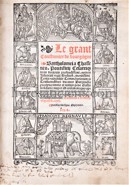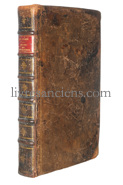

Incunabula and early printed books
1250 €
950 €
800 €
1000 €
2500 €
1500 €
33000 €
900 €
600 €
1300 €
4000 €
2800 €
250 €
950 €
4500 €
2000 €
15000 €
900 €
1800 €
1800 €
1750 €
550 €
1500 €
2500 €
1800 €
European VAT number: FR87515091171
© Eric Zink, Antiquarian Bookseller















![Photo [LIVRE d'HEURES ENLUMINÉ].](https://images.livresanciens.com/livres/200977/images/P15.jpg
)






![Photo HIPPOCRATE || [CORNARIUS, Janus].](https://images.livresanciens.com/livres/201468/images/P3.jpg
)


![Photo [DU HAILLAN, Bernard de Girard].](https://images.livresanciens.com/livres/201408/images/P8.jpg
)







